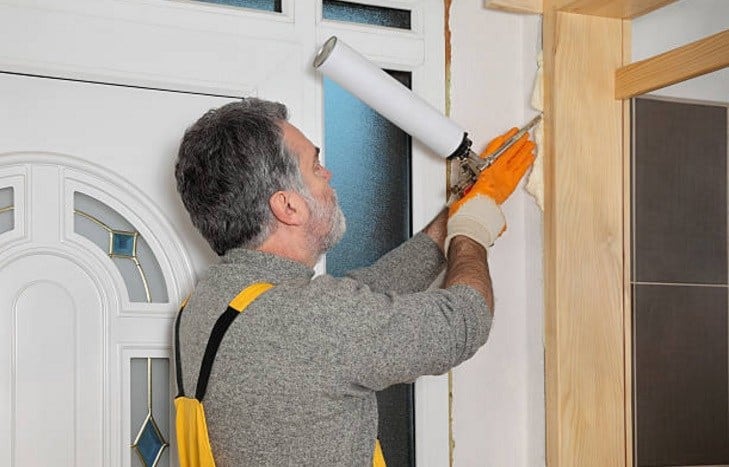How Many Coats Of Polyurethane Are Needed To Achieve A Beautiful Finish
You will want to apply Polyurethane to your woodworking project to ensure it is properly finished and left looking shiny and new. Applying this substance will ensure a protective coat is added and the wood will last longer.
The question is not whether or not you should add this protective substance to your wood. That is a given. It is how many coats of Polyurethane are needed to achieve a beautiful finish.
1. Sand Your Wood
When wood is left unsanded, it is more porous and difficult to work with. No matter how many coats you add of Polyurethane, the look will still not be completed. Unsanded wood is hard, bumpy, and often unpleasing to the eye.
It is best to sand your wood before any coats are added. This ensures the protectant goes on smoothly and actually provides a finished look. You can use a belt sander on larger projects, or sandpaper by hand on smaller wood items.
If you are using a belt sander, it is best to stick to a fine grit. It is also wise to use a few different grit levels and multiple sanding times to ensure it is done properly. Start with 100-grit and work your way up to a 220-grit that provides extremely fine sanding.
You can even make your own sandpaper belt to fit into your sander. This will make the process take longer but will save you on money.
2. Remove Wood Dust
After sanding, there is going to be a lot of wood dust left on your project. This dust needs to be removed if you want your Polyurethane coats to stick well. You can simply brush some of the dust off first, and then use a vacuum to get the rest.
A cloth that is lint-free also works well to remove dust from wood. The Microswipe cloth is a good option. It is designed with wood projects in mind.
The area where you are working should be free from dust as well. This is because you want the space to be as clean as possible so nothing contaminates the surface while you are allowing it to dry. Fully vacuum the area using a shop vac and dust off any surrounding surfaces.
It is also best to leave a window slightly open on one end, with a fan pointed outward on another end. This will help to improve the air circulation so you are not left to breathe in all of the chemicals from the compounds.
You can also use a respirator to cover your face if you desire. The smell of Polyurethane can be overpowering, especially if you are not used to it.
3. Oil-Based Vs. Water-Based
There are two main types of Polyurethane. The first is an oil-based option. The second is water-based.
The oil-based option is more common. It is easier to work with, but does take more time to dry. More coats of the substance are also needed to get the desired thickness level and finishing on the wood.
The water-based choice is mainly used for professionals. It takes a lot less dry time, and fewer coats, which makes it appealing to do-it-yourselfers.
4. 3 Coat Application
 There needs to be 3 coats of Polyurethane applied, especially if you are using an oil-based finish. The first coat should be mixed with mineral spirits. This acts as a sealer and provides a barrier between the wood and the oil finish you are using.
There needs to be 3 coats of Polyurethane applied, especially if you are using an oil-based finish. The first coat should be mixed with mineral spirits. This acts as a sealer and provides a barrier between the wood and the oil finish you are using.
A bristle brush is needed to apply the coats. Long, even strokes will ensure the entire surface gets covered. It is also best to wait a few minutes so you can blend in any run-off oil.
You should wait about 24 hours for the seal coat to dry before applying Polyurethane straight from the can. The same even strokes should be used for this coat. Once you think you are finished with one coat, go back over it, going with the grain only.
Wait another 24 hours for this coat to dry. Once that is complete, apply another undiluted coat of the Polyurethane. It should be applied in the same manner, first covering the wood, and then going with the grain only to complete the finish.
5. Fix Blemishes Before Adding a Final Coat
After approximately 12 hours, the coat should be dry enough for you to begin fixing blemishes. This includes using a razor to cut away any excess finish that is bubbled up on your wood. Be careful not to cut into the finish or wood, and only remove the bubbled up section.
Wait an additional 12 hours, and then go over the finish with sandpaper if needed. You should get the sandpaper wet in order to wet-sand the blemishes out. This will prevent you from going too far, unless you over sand.
If you need to sand out blemishes, a coat of polish needs to be applied. This should be done after 48 hours have passed. Use a rubbing compound first, and then follow up with a polishing compound.
A clean cotton cloth should be used for each of these applications. The cloth should be dampened with water before adding the rubbing compound. A dry cloth should be used once everything is dry to buff out any areas that need it.
Once all of this is done, you have a finished wood product that is as shiny and well-protected as a piece you would have purchased.
Final Thoughts
One coat of Polyurethane is not often enough to ensure a truly beautiful finish on your wood projects. Multiple are needed to provide plenty of protectant and keep your wood looking gorgeous.
Steps for Applying Polyurethane for a Beautiful Finish:
- Sand down the wood.
- Ensure there is no dust left behind.
- Apply the first coat and wait for it to dry.
- Apply a second coat.
- Apply a third coat.
- Fix the blemishes with a razor blade and sander.
- Apply coats of a rubbing compound and polish.
References:
- http://www.polyurethanes.org/en/where-is-it/adhesives-and-coatings
- http://ardwood.org/articles/view/pro/23/254

